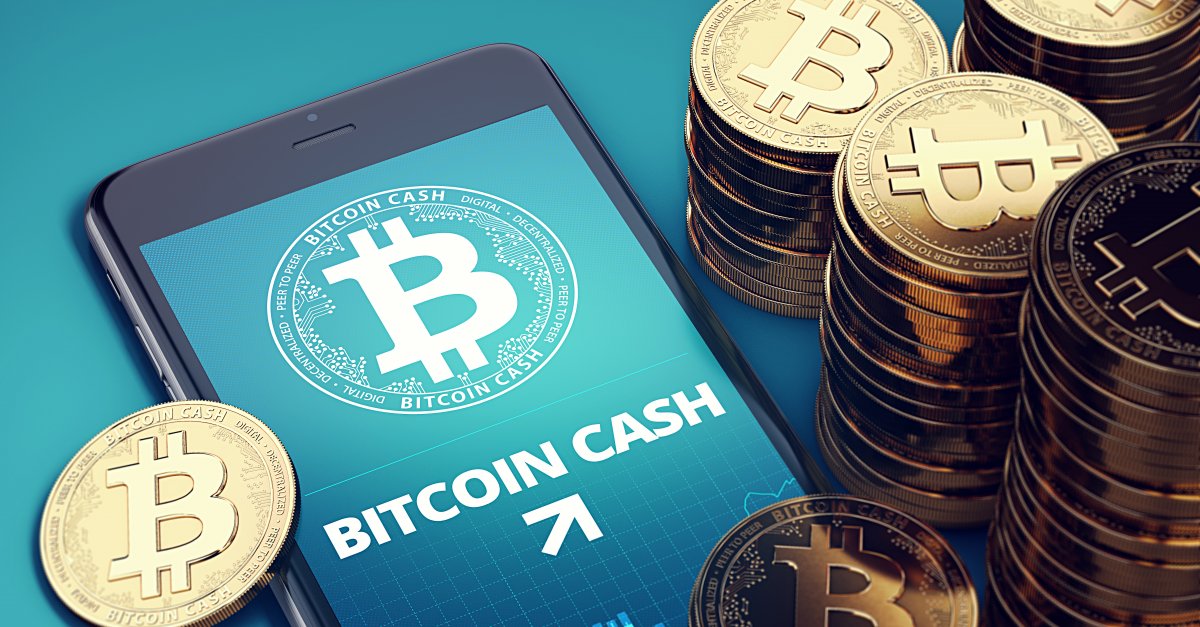Introduction
Welcome to the exciting world of Bitcoin forks! In the ever-evolving realm of digital currencies, forks have become a prominent phenomenon, offering new possibilities and challenges. For those unfamiliar with the term, a Bitcoin fork refers to the creation of a new cryptocurrency by modifying the existing Bitcoin codebase. These forks often come with distinct features, improvements, or changes that can spark significant interest within the crypto community.
Bitcoin, the pioneer cryptocurrency, has undergone several forks in its history. Each fork has given birth to a new digital currency with its own unique characteristics. These forks have not only diversified the cryptocurrency landscape but have also provided opportunities for traders, investors, and developers. With each subsequent fork, the question arises: what digital currency will be created with the next Bitcoin fork?
This article aims to explore the possibilities surrounding the next Bitcoin fork, shedding light on the potential new cryptocurrency it may bring forth. It will also delve into the opportunities and challenges that may arise from this fork, as well as its impact on the wider Bitcoin community.
So, fasten your seatbelts as we embark on this journey into the world of Bitcoin forks, where innovation and disruption go hand in hand.
What is a Bitcoin Fork?
In the realm of cryptocurrency, a fork occurs when a blockchain diverges into two branches due to changes made to the original code. Bitcoin, being an open-source project, allows developers to propose and implement modifications to the existing codebase, leading to the creation of new digital currencies.
A Bitcoin fork can be classified into two types: hard forks and soft forks. A hard fork takes place when a radical change is made to the Bitcoin protocol, resulting in the incompatibility between the new and old versions. On the other hand, a soft fork is a backward-compatible upgrade that maintains compatibility with the existing blockchain.
When a fork occurs, the entire transaction history and balances of the original blockchain are copied to the newly created fork. From there, the new cryptocurrency can evolve independently, developing its own set of rules, governance structures, and functionalities. This allows for experimentation and innovation in the decentralized digital currency space.
Bitcoin forks are often driven by various motivations, such as improving scalability, enhancing privacy features, or implementing new consensus mechanisms. These modifications aim to address some of the limitations or concerns associated with the original Bitcoin network and offer alternative solutions.
It’s important to note that not all forks are successful or gain significant traction. Many forks fail to gain widespread acceptance and fade away quickly. However, some forks manage to make a significant impact and carve out their own niche within the crypto market.
In the next section, we will take a closer look at the history of Bitcoin forks and the notable digital currencies that have emerged from them.
Types of Bitcoin Forks
Bitcoin forks can be categorized into two main types: hard forks and soft forks. While both types involve modifications to the original Bitcoin code, they differ in terms of their impact on the blockchain and the level of compatibility with the existing network.
1. Hard Forks: A hard fork occurs when a significant change is made to the Bitcoin protocol, resulting in a permanent divergence from the original blockchain. This means that the new version and the old version are no longer compatible. All participants in the network must upgrade to the new version to continue participating in the forked blockchain. Examples of successful hard forks include Bitcoin Cash (BCH) and Bitcoin SV (BSV), which arose from differences in opinion regarding scalability solutions.
2. Soft Forks: Unlike hard forks, soft forks are backward-compatible upgrades that maintain compatibility with the existing blockchain. In a soft fork, the new rules implemented are within the bounds of the original protocol, allowing participants who haven’t upgraded to the new version to continue using the blockchain. However, non-upgraded participants may not have access to some of the new features or functionalities introduced. Segregated Witness (SegWit) is an example of a notable soft fork in the Bitcoin network, which aimed to increase transaction capacity and improve scalability.
It’s worth mentioning that there can be variations and subcategories within these two primary types of forks. For instance, a contentious hard fork occurs when there is a significant disagreement within the community, resulting in the creation of two separate and competing chains. Ethereum Classic (ETC) is a prime example of a contentious hard fork that arose due to the DAO (Decentralized Autonomous Organization) hack.
These types of forks provide developers and enthusiasts with opportunities to experiment with new ideas, improve upon existing technology, and explore alternative paths for the Bitcoin network.
In the following section, we will dive deeper into the history of Bitcoin forks and the impact they have had on the cryptocurrency landscape.
The History of Bitcoin Forks
The history of Bitcoin forks is an intriguing and dynamic journey that has shaped the cryptocurrency landscape. Since its inception, Bitcoin has undergone several notable forks, each resulting in the creation of a new digital currency with its own unique features and objectives.
One of the earliest and most significant forks occurred in 2017, leading to the creation of Bitcoin Cash (BCH). This hard fork was primarily driven by concerns regarding Bitcoin’s scalability and transaction speed. Bitcoin Cash aimed to address these issues by increasing the block size from 1MB to 8MB, allowing for more transactions to be processed in each block. This fork sparked heated debates within the community, showcasing the diverging perspectives on how to best scale the Bitcoin network.
Following the success of Bitcoin Cash, other notable forks emerged. Bitcoin Gold (BTG) was created in late 2017 with the aim of making Bitcoin mining more accessible to a wider audience. It introduced a new mining algorithm that favored GPU mining, allowing individuals with standard computer hardware to participate in the mining process.
In 2018, Bitcoin Private (BTCP) was born as a result of a merge fork involving Zclassic and Bitcoin. This fork aimed to enhance the privacy features of Bitcoin by utilizing the zk-SNARKS technology implemented in Zcash. It provided users with the option to conduct private transactions while still benefiting from the security and decentralized nature of Bitcoin.
Another noteworthy fork is Bitcoin SV (BSV), which originated from disagreements over the future direction of Bitcoin Cash. It aimed to restore what its proponents believed to be the original vision of Bitcoin’s creator, Satoshi Nakamoto, by increasing the block size limit to a massive 128MB. This fork ignited a contentious debate within the community and led to a split between Bitcoin Cash and Bitcoin SV supporters.
While not all forks have achieved fame and success, they have undeniably fueled innovation and diversified the cryptocurrency market. Each fork has brought about different features, functionalities, or philosophical approaches, catering to specific niches within the digital currency ecosystem.
The fascinating aspect of Bitcoin forks is that they enable developers and users to experiment with new ideas and test alternative solutions to the challenges faced by the original Bitcoin network. This iterative process of forking and improving has led to the birth of numerous unique cryptocurrencies, enriching the overall blockchain ecosystem.
Now that we have explored the history of Bitcoin forks, let’s delve into what the next Bitcoin fork might create, and the opportunities and challenges it may bring.
What Will the Next Bitcoin Fork Create?
The anticipation surrounding the next Bitcoin fork is palpable, as it holds the potential to introduce exciting developments and innovations to the world of digital currencies. While it is impossible to predict the exact nature of the next fork, we can explore some possibilities based on current trends and discussions within the crypto community.
One potential outcome of the next Bitcoin fork could be the creation of a cryptocurrency focused on enhancing privacy and anonymity. With growing concerns about online privacy, such a fork could implement advanced cryptographic techniques or zero-knowledge proofs to offer enhanced privacy features. This could appeal to users who value financial privacy and want to conduct transactions without revealing their identities.
Another possibility is the creation of a Bitcoin fork that prioritizes scalability and transaction speed. As the demand for cryptocurrencies continues to rise, the scalability challenge remains a significant hurdle for Bitcoin. The next fork could introduce innovative solutions, such as layer-two protocols or sharding techniques, to increase transaction capacity and improve network efficiency.
Additionally, the next Bitcoin fork may explore new consensus mechanisms beyond the traditional proof-of-work (PoW) consensus used by Bitcoin. We have witnessed the rise of alternative consensus algorithms, such as proof-of-stake (PoS) and delegated proof-of-stake (DPoS), which offer advantages such as energy efficiency and faster transaction confirmation. A fork could introduce one of these consensus mechanisms to provide an alternative to PoW and attract a new user base.
Furthermore, there is a possibility of integrating smart contract capabilities into the next Bitcoin fork. Smart contracts have proven to be a powerful tool in blockchain ecosystems, facilitating the execution of self-executing and transparent agreements. By incorporating smart contracts into a Bitcoin fork, developers could unlock a whole new realm of possibilities, enabling decentralized applications and programmable money on the Bitcoin network.
While these are just speculative possibilities, it is essential to remember that the success of a Bitcoin fork depends on various factors, including community support, adoption, and technological advancements. The next Bitcoin fork could be a groundbreaking event, bringing forth a digital currency that addresses the shortcomings of its predecessors and introduces novel features that captivate the crypto community.
Now that we have explored the potential outcomes of the next Bitcoin fork, let’s delve into the opportunities and challenges that may arise from this significant event.
New Opportunities with the Next Bitcoin Fork
The next Bitcoin fork holds immense potential to create new opportunities for various stakeholders in the cryptocurrency ecosystem. Here are some of the opportunities that may arise with the next Bitcoin fork:
1. Investment Opportunities: A new Bitcoin fork can present an opportunity for traders and investors to diversify their portfolios. Just like previous forks, the next fork may result in the creation of a new digital currency that gains significant traction and value in the market. Early investors and adopters of the forked cryptocurrency could benefit from potential price appreciation.
2. Technological Advancements: With each Bitcoin fork, there is the possibility of introducing novel technological advancements. The next fork may bring improvements in scalability, privacy features, consensus mechanisms, or interoperability with other blockchain networks. These advancements can enhance the overall functionality and usability of the forked cryptocurrency and drive innovation in the broader blockchain space.
3. Enhanced Functionality: The next Bitcoin fork could introduce additional functionalities or use cases. For example, it might focus on enabling decentralized finance (DeFi) applications, cross-chain interoperability, or atomic swaps between different cryptocurrencies. These features can expand the possibilities of what can be achieved with cryptocurrencies and open up new avenues for users and developers alike.
4. Community Engagement: Forks often lead to active community engagement and participation. The excitement surrounding a new cryptocurrency and the potential it holds can foster a vibrant community of developers, enthusiasts, and contributors. This community can collaborate to improve the technology, explore new use cases, and contribute to the growth and adoption of the forked cryptocurrency.
5. Learning and Education: Each Bitcoin fork provides an opportunity for individuals to deep dive into the underlying technology and understand the fundamental concepts of cryptocurrencies. Through research and exploration of the new forked cryptocurrency, individuals can expand their knowledge and gain insights into the intricacies of blockchain technology.
6. Competition and Innovation: The emergence of a new cryptocurrency resulting from a Bitcoin fork ignites healthy competition and inspires innovation. It encourages developers and blockchain projects to come up with better solutions, improved features, and enhanced user experiences. This competition drives the overall development of the cryptocurrency ecosystem, benefiting users with more robust and innovative options.
The next Bitcoin fork has the potential to create a range of opportunities that can shape the future of the digital currency landscape. As with any opportunity, it is important for investors and participants to conduct thorough research, assess risks, and make informed decisions when engaging with the new cryptocurrency.
Now, let’s explore the potential challenges that may arise with the next Bitcoin fork.
Potential Challenges with the Next Bitcoin Fork
While the next Bitcoin fork presents exciting opportunities, it is not without its potential challenges. Here are some of the challenges that may arise with the next Bitcoin fork:
1. Community Fragmentation: Forks can lead to community fragmentation, with different factions supporting different versions of the blockchain. This division can result in debates, disagreements, and even contentious splits within the community. The fragmentation can dilute efforts, hinder collaboration, and create confusion for users and developers.
2. Lack of Adoption: The success of a forked cryptocurrency largely depends on its adoption by users and businesses. Gaining widespread acceptance and integration into existing infrastructure can be a hurdle for new forked currencies. Without sufficient adoption, the value and utility of the cryptocurrency may be limited, impeding its growth and long-term viability.
3. Security Risks: Forked cryptocurrencies may face security challenges, especially during the early stages. The new codebase and functionality may introduce vulnerabilities that could be exploited by hackers or malicious actors. Ensuring robust security measures, conducting thorough code audits, and implementing stringent testing processes are crucial to mitigate these risks.
4. Regulatory Uncertainty: The ever-evolving landscape of cryptocurrency regulations can pose challenges for new forked cryptocurrencies. The legal framework and regulatory environment may vary from country to country, leading to uncertainty and potential compliance issues. Navigating these regulatory waters and ensuring compliance can be a complex process for the developers and users of the forked cryptocurrency.
5. Technical Complexity: Implementing new features and functionalities in a forked cryptocurrency can involve technical complexities that require expertise and resources. The development team must navigate challenges such as code optimizations, network upgrades, and maintaining compatibility with existing infrastructure and wallets. Overcoming these technical hurdles requires skilled developers, robust testing, and ongoing support and maintenance.
6. Market Skepticism: The cryptocurrency market can be skeptical of new forked cryptocurrencies, especially considering the proliferation of forks that have ultimately failed to gain significant traction. Convincing investors, traders, and users about the value proposition and uniqueness of the new cryptocurrency may prove challenging. Building trust and showcasing real-world use cases and utility are crucial to overcome this skepticism.
Addressing these potential challenges requires a comprehensive strategy, proactive community engagement, collaborative efforts, and ongoing development and support. It is important for developers and users to be aware of these challenges and actively work towards overcoming them to maximize the potential of the next Bitcoin fork.
Now, let’s explore the impact that the next Bitcoin fork can have on the wider Bitcoin community.
The Impact on the Bitcoin Community
The next Bitcoin fork has the potential to significantly impact the broader Bitcoin community in various ways. Here are some potential impacts:
1. Community Divisions: A Bitcoin fork can lead to divisions within the community, as supporters of different versions of the blockchain may have contrasting viewpoints. This can result in debates and disagreements, but it can also stimulate healthy discussions and foster innovation as different approaches are explored.
2. Market Volatility: Fork events can introduce volatility in the cryptocurrency market, as uncertainty and speculation surround the new forked cryptocurrency. Traders and investors may adjust their strategies and positions, leading to price fluctuations not just in the forked cryptocurrency but also in Bitcoin and other related digital assets.
3. Market Competition: The emergence of a new forked cryptocurrency can intensify competition within the cryptocurrency market. This competition drives innovation and forces existing cryptocurrencies, including Bitcoin, to continually evolve and improve to maintain their market positions.
4. User Empowerment: Forks allow users to have a voice in the evolution of the Bitcoin network. They can choose to adopt the new forked cryptocurrency if they resonate with its features, governance model, or philosophical aspects. This empowers users to shape the direction of the cryptocurrency ecosystem based on their preferences and values.
5. Technological Advancements: Forks often introduce technological advancements that can benefit the broader Bitcoin community. The next Bitcoin fork could bring improvements in scalability, privacy, security, or functionality, which could potentially be incorporated into the main Bitcoin network if proven successful and robust.
6. Learning and Education: Fork events provide an opportunity for individuals to deepen their understanding of blockchain technology and the underlying principles of cryptocurrencies. They serve as learning experiences, encouraging users to explore different aspects of decentralization, consensus mechanisms, and governance models.
7. Network Effects: If the new forked cryptocurrency gains significant adoption and utility, it may create network effects that influence the broader Bitcoin community. Developers may build applications and infrastructure specifically for the forked cryptocurrency, attracting users and driving further adoption.
Overall, the impact of the next Bitcoin fork on the Bitcoin community will depend on various factors such as the success of the forked cryptocurrency, community support, adoption levels, and technological advancements. It is an opportunity for the community to come together, engage in constructive discussions, and work towards the common goal of improving the overall cryptocurrency ecosystem.
Now, let’s wrap up our exploration of Bitcoin forks and their impact on the community.
Conclusion
The world of Bitcoin forks presents a dynamic landscape of innovation, challenges, and opportunities. These forks have consistently pushed the boundaries of what is possible in the realm of digital currencies, driving competition, and fostering technological advancements.
Through hard forks and soft forks, the Bitcoin network has given birth to several notable cryptocurrencies, each with its own unique features and objectives. From Bitcoin Cash to Bitcoin SV, these forks have diversified the cryptocurrency market, offering users and investors alternative options.
The next Bitcoin fork holds immense potential to create new digital currencies that address the limitations of the original Bitcoin network. It can introduce innovative solutions in areas such as scalability, privacy, consensus mechanisms, or smart contract functionality.
However, with these opportunities come challenges. Community divisions, lack of adoption, security risks, regulatory uncertainty, and technical complexities are some of the hurdles that developers and users may face when engaging with the new forked cryptocurrency.
Regardless of the challenges, Bitcoin forks foster community engagement, inspire innovation, and empower users to shape the future of the cryptocurrency ecosystem. Each fork represents an opportunity for traders, investors, developers, and enthusiasts to contribute to the growth and development of the community.
As the next Bitcoin fork approaches, it is crucial for individuals to stay informed, conduct thorough research, and make informed decisions when engaging with the new cryptocurrency. By actively participating and embracing the opportunities presented by forks, the Bitcoin community can continue to drive the evolution of digital currencies and shape the future of decentralized finance.
So, let’s embark on this journey of exploration and discovery, as we eagerly anticipate the next Bitcoin fork and the possibilities it holds for the ever-evolving world of cryptocurrencies.

























